Top 10 Fast Land Animals
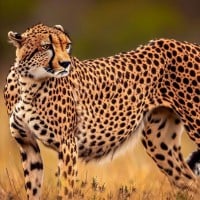 The cheetah (Acinonyx jubatus) is a large cat and native to Africa and central Iran. It is the fastest land animal, estimated to be capable of running at 80 to 128 km/h (50 to 80 mph) with the fastest reliably recorded speeds being 93 and 98 km/h (58 and 61 mph), and as such has several adaptations ...read more.
The cheetah (Acinonyx jubatus) is a large cat and native to Africa and central Iran. It is the fastest land animal, estimated to be capable of running at 80 to 128 km/h (50 to 80 mph) with the fastest reliably recorded speeds being 93 and 98 km/h (58 and 61 mph), and as such has several adaptations ...read more. This isn’t exactly an opinion. Cheetahs are the fastest land animal, and besides that, they have several unique traits that enable them to survive in a place with hyenas, lions, leopards, crocodiles— you name it. As mentioned, they have streaks below their eyes that allow them to see despite the glare of the sun. If your into to football, you’ll know that football players put ‘paint’ below their eyes to see long distances! The way they take down prey is awesome! If you ever get a chance to watch it on cam, I would! They have large lungs, and the amount of distance they travel in one stride is amazing. Amaxing
Cheetahs are so fast, the marks that run from their eyes down to their lower face area are like the stripes football players put under their eyes.
Definitely the fastest, their top speed is approximately 75 MPH but they can only run this fast in short bursts.
Cheetah the fastest animal thin but the king of speed
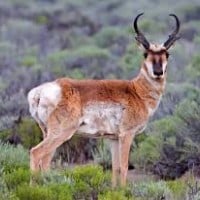 Native to North America, the Pronghorn Antelope is known for its incredible speed, second only to the cheetah. It possesses a unique set of branched horns and is highly adapted to open plains, feeding primarily on grasses and shrubs.
Native to North America, the Pronghorn Antelope is known for its incredible speed, second only to the cheetah. It possesses a unique set of branched horns and is highly adapted to open plains, feeding primarily on grasses and shrubs. Faster then a cheetah!
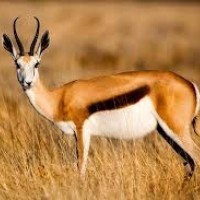
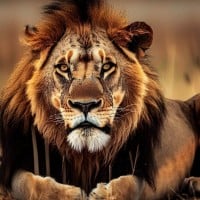 The lion (Panthera leo) is a large cat of the genus Panthera native to Africa and India. It has a muscular, broad-chested body, short, rounded head, round ears, and a hairy tuft at the end of its tail. It is sexually dimorphic; adult male lions are larger than females and have a prominent mane. It is a social species, forming groups called prides. A lion's pride consists of a few adult males, related females, and cubs. Groups of female lions usually hunt together, preying mostly on large ungulates. The lion is an apex and keystone predator; although some lions scavenge when opportunities occur and have been known to hunt humans, the species typically does not actively seek out and prey on humans. ...read more.
The lion (Panthera leo) is a large cat of the genus Panthera native to Africa and India. It has a muscular, broad-chested body, short, rounded head, round ears, and a hairy tuft at the end of its tail. It is sexually dimorphic; adult male lions are larger than females and have a prominent mane. It is a social species, forming groups called prides. A lion's pride consists of a few adult males, related females, and cubs. Groups of female lions usually hunt together, preying mostly on large ungulates. The lion is an apex and keystone predator; although some lions scavenge when opportunities occur and have been known to hunt humans, the species typically does not actively seek out and prey on humans. ...read more. Top speed for a lion is 49.7 MPH, which makes it slower than a quarter horse but faster than an elk
Interesting fact: Lions actually don't run much at all, it's the lionesses who do all the work, the lion simply breeds and watches over them. Also, the males get the first pick of what the females hunt
Lions are fastest big cat
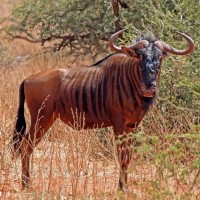 Wildebeests, also called gnus, are antelopes in the genus Connochaetes. They belong to the family Bovidae, which includes antelopes, cattle, goats, sheep, and other even-toed horned ungulates.
Wildebeests, also called gnus, are antelopes in the genus Connochaetes. They belong to the family Bovidae, which includes antelopes, cattle, goats, sheep, and other even-toed horned ungulates.
They are very fast
Quarter horses are amazing down pat I have ridden one once and now were I go riding that is one of my favorite horses in that whole barn.
Here are my top ten horse breeds and colors
1. Thoroughbred
2. American Paint Horse
3. Morgan
4. Quarter Horse
5. Arabian
6. Dapple Grey
7. Strawberry Roan
8. Mustang
9. Chestnut
10. Tennessee Walker
A quarter horse is actually faster than a lion with a top speed of 88.5 Km/h
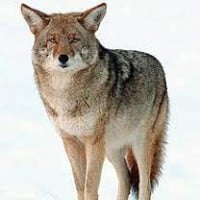 Coyotes are canines native to North and Central America. They are highly adaptable and can thrive in a variety of environments, from forests and grasslands to urban areas. Coyotes have a similar appearance to domestic dogs but are typically smaller in size, with a bushy tail, erect ears, and a pointed muzzle. They are opportunistic omnivores, feeding on a diverse diet that includes small mammals, birds, insects, and even plants. Known for their vocalizations, coyotes communicate using a range of howls, barks, and yips. They play a crucial role in ecosystems by controlling populations of rodents and other small animals.
Coyotes are canines native to North and Central America. They are highly adaptable and can thrive in a variety of environments, from forests and grasslands to urban areas. Coyotes have a similar appearance to domestic dogs but are typically smaller in size, with a bushy tail, erect ears, and a pointed muzzle. They are opportunistic omnivores, feeding on a diverse diet that includes small mammals, birds, insects, and even plants. Known for their vocalizations, coyotes communicate using a range of howls, barks, and yips. They play a crucial role in ecosystems by controlling populations of rodents and other small animals.Why doesn't our species get enough praise?
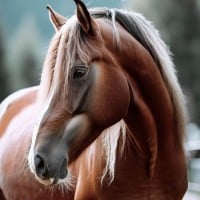 The horse is an odd-toed, hoofed mammal of the taxonomic family Equidae whose sole major subspecies (Equus ferus caballus) is a domesticate, although wild subspecies have survived into the modern period. All subspecies, including the two extant ones, descend from the Pleistocene Equus ferus. The horse has evolved over the past 45 to 55 million years from a small multi-toed creature, Eohippus, into the large, single-toed animal of today. Humans began domesticating horses around 4000 BC, and their domestication is believed to have been widespread by 3000 BC. Horses in the subspecies caballus are domesticated, although some domesticated populations live in the wild as feral horses. These feral ...read more.
The horse is an odd-toed, hoofed mammal of the taxonomic family Equidae whose sole major subspecies (Equus ferus caballus) is a domesticate, although wild subspecies have survived into the modern period. All subspecies, including the two extant ones, descend from the Pleistocene Equus ferus. The horse has evolved over the past 45 to 55 million years from a small multi-toed creature, Eohippus, into the large, single-toed animal of today. Humans began domesticating horses around 4000 BC, and their domestication is believed to have been widespread by 3000 BC. Horses in the subspecies caballus are domesticated, although some domesticated populations live in the wild as feral horses. These feral ...read more. Average top speed for the general horse is 54.7 MPH
 A rhinoceros, commonly abbreviated to rhino, is a member of any of the five extant species (or numerous extinct species) of odd-toed ungulates in the family Rhinocerotidae. (It can also refer to a member of any of the extinct species of the superfamily Rhinocerotoidea.) Two of the extant species are native to Africa, and three to South and Southeast Asia. ...read more.
A rhinoceros, commonly abbreviated to rhino, is a member of any of the five extant species (or numerous extinct species) of odd-toed ungulates in the family Rhinocerotidae. (It can also refer to a member of any of the extinct species of the superfamily Rhinocerotoidea.) Two of the extant species are native to Africa, and three to South and Southeast Asia. ...read more.
 Bears are carnivoran mammals of the family Ursidae. They are classified as caniforms, or doglike carnivorans. Although only eight species of bears are extant, they are widespread, appearing in a wide variety of habitats throughout the Northern Hemisphere and partially in the Southern Hemisphere. Bears ...read more.
Bears are carnivoran mammals of the family Ursidae. They are classified as caniforms, or doglike carnivorans. Although only eight species of bears are extant, they are widespread, appearing in a wide variety of habitats throughout the Northern Hemisphere and partially in the Southern Hemisphere. Bears ...read more. These guys are very fast.
 Humans (Homo sapiens) are the most abundant and widespread species of primate, characterized by bipedalism and large, complex brains. This has enabled the development of advanced tools, culture, and language. Humans are highly social and tend to live in complex social structures composed of many cooperating and competing groups, from families and kinship networks to political states. Social interactions between humans have established a wide variety of values, social norms, and rituals, which bolster human society. Curiosity and the human desire to understand and influence the environment and to explain and manipulate phenomena have motivated humanity's development of science, philosophy, mythology, ...read more.
Humans (Homo sapiens) are the most abundant and widespread species of primate, characterized by bipedalism and large, complex brains. This has enabled the development of advanced tools, culture, and language. Humans are highly social and tend to live in complex social structures composed of many cooperating and competing groups, from families and kinship networks to political states. Social interactions between humans have established a wide variety of values, social norms, and rituals, which bolster human society. Curiosity and the human desire to understand and influence the environment and to explain and manipulate phenomena have motivated humanity's development of science, philosophy, mythology, ...read more. Elephants are faster then humans
Ya quite fast
 The black mamba is a species of extremely venomous snake, a member of the family Elapidae native to parts of Sub-Saharan Africa.
The black mamba is a species of extremely venomous snake, a member of the family Elapidae native to parts of Sub-Saharan Africa. Slithers 22 miles per hour faster than a average human.
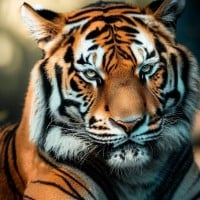 The tiger (Panthera tigris) is the largest living cat species and a member of the genus Panthera. It is most recognisable for its dark vertical stripes on orange fur with a white underside. An apex predator, it primarily preys on ungulates such as deer and wild boar. It is territorial and generally a solitary but social predator, requiring large contiguous areas of habitat, which support its requirements for prey and rearing of its offspring. Tiger cubs stay with their mother for about two years, then become independent and leave their mother's home range to establish their own. ...read more.
The tiger (Panthera tigris) is the largest living cat species and a member of the genus Panthera. It is most recognisable for its dark vertical stripes on orange fur with a white underside. An apex predator, it primarily preys on ungulates such as deer and wild boar. It is territorial and generally a solitary but social predator, requiring large contiguous areas of habitat, which support its requirements for prey and rearing of its offspring. Tiger cubs stay with their mother for about two years, then become independent and leave their mother's home range to establish their own. ...read more. Tigers are not made to run like Cheetahs, but they are still very fast with an average top speed of 30-40 kmph but only in short bursts, much like it's cousin. Cheetahs actually walk most of their time because it takes a lot of energy to run like that and they only do that to hunt most of the time.
Its extremely fast for its size ask a 9 foot 350 kg cheetah to run I bet it can't even walk like a tiger. Tigers too awesome to be challenged in this 30- 40 km per hour is too much for a giant cheetah
Fast but not that much because of its power. if god gave him this power than it would not have any weekness
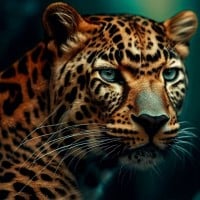 The leopard is one of the five "big cats" in the genus Panthera. It is one of the most adaptable and the most widespread big cat; it's secrets being:well camouflaged fur; its opportunistic hunting behaviour, broad diet, and strength to move heavy carcasses into trees; its ability to adapt to various habitats ranging from rain-forest to steppe and including arid and mountainous areas; and to run at speeds up to 58 kilometres per hour (36 mph).
The common name "leopard" (pronounced /ˈle-pərd/) is a Greek compound of λέων (leōn) ("lion") and πάρδος (pardos) ("male panther"). It lives throughout Asia (except for North Asia) and Africa, including Indonesia.
The leopard is one of the five "big cats" in the genus Panthera. It is one of the most adaptable and the most widespread big cat; it's secrets being:well camouflaged fur; its opportunistic hunting behaviour, broad diet, and strength to move heavy carcasses into trees; its ability to adapt to various habitats ranging from rain-forest to steppe and including arid and mountainous areas; and to run at speeds up to 58 kilometres per hour (36 mph).
The common name "leopard" (pronounced /ˈle-pərd/) is a Greek compound of λέων (leōn) ("lion") and πάρδος (pardos) ("male panther"). It lives throughout Asia (except for North Asia) and Africa, including Indonesia. Leapords should be ahead of the coyote because leapords run fast to ambush their prey. They also can run 40 - 45 miles per hour and the coyote can only run 40 - 43 miles per hour
 Gorillas are herbivorous, predominantly ground-dwelling great apes that inhabit the tropical forests of equatorial Africa. The genus Gorilla is divided into two species: the eastern gorilla and the western gorilla, and either four or five subspecies. The DNA of gorillas is highly similar to that of ...read more.
Gorillas are herbivorous, predominantly ground-dwelling great apes that inhabit the tropical forests of equatorial Africa. The genus Gorilla is divided into two species: the eastern gorilla and the western gorilla, and either four or five subspecies. The DNA of gorillas is highly similar to that of ...read more. A hedgehog is any of the spiny mammals of the subfamily Erinaceinae, in the eulipotyphlan family Erinaceidae.
A hedgehog is any of the spiny mammals of the subfamily Erinaceinae, in the eulipotyphlan family Erinaceidae.
 The dog or domestic dog (Canis familiaris or Canis lupus familiaris) is a domesticated descendant of the wolf, and is characterized by an upturning tail. The dog is derived from an ancient, extinct wolf, and the modern wolf is the dog's nearest living relative. The dog was the first species to be domesticated, by hunter–gatherers over 15,000 years ago, before the development of agriculture. Due to their long association with humans, dogs have expanded to a large number of domestic individuals and gained the ability to thrive on a starch-rich diet that would be inadequate for other canids. ...read more.
The dog or domestic dog (Canis familiaris or Canis lupus familiaris) is a domesticated descendant of the wolf, and is characterized by an upturning tail. The dog is derived from an ancient, extinct wolf, and the modern wolf is the dog's nearest living relative. The dog was the first species to be domesticated, by hunter–gatherers over 15,000 years ago, before the development of agriculture. Due to their long association with humans, dogs have expanded to a large number of domestic individuals and gained the ability to thrive on a starch-rich diet that would be inadequate for other canids. ...read more. The cat (Felis catus) is a domestic species of small carnivorous mammal. ...read more.
The cat (Felis catus) is a domestic species of small carnivorous mammal. ...read more.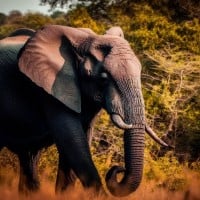 Elephants are the largest existing land animals. Three living species are currently recognised: the African bush elephant, the African forest elephant, and the Asian elephant. They are the only surviving members of the family Elephantidae and the order Proboscidea, extinct relatives include mammoths and mastodons. Distinctive features of elephants include a long proboscis called a trunk, tusks, large ear flaps, pillar-like legs, and tough but sensitive skin. The trunk is used for breathing, bringing food and water to the mouth, and grasping objects. Tusks, which are derived from the incisor teeth, serve both as weapons and as tools for moving objects and digging. The large ear flaps assist in ...read more.
Elephants are the largest existing land animals. Three living species are currently recognised: the African bush elephant, the African forest elephant, and the Asian elephant. They are the only surviving members of the family Elephantidae and the order Proboscidea, extinct relatives include mammoths and mastodons. Distinctive features of elephants include a long proboscis called a trunk, tusks, large ear flaps, pillar-like legs, and tough but sensitive skin. The trunk is used for breathing, bringing food and water to the mouth, and grasping objects. Tusks, which are derived from the incisor teeth, serve both as weapons and as tools for moving objects and digging. The large ear flaps assist in ...read more. The common hippopotamus, or hippo, is a large, mostly herbivorous mammal in sub-Saharan Africa, and one of only two extant species in the family Hippopotamidae, the other being the pygmy hippopotamus.
The common hippopotamus, or hippo, is a large, mostly herbivorous mammal in sub-Saharan Africa, and one of only two extant species in the family Hippopotamidae, the other being the pygmy hippopotamus.